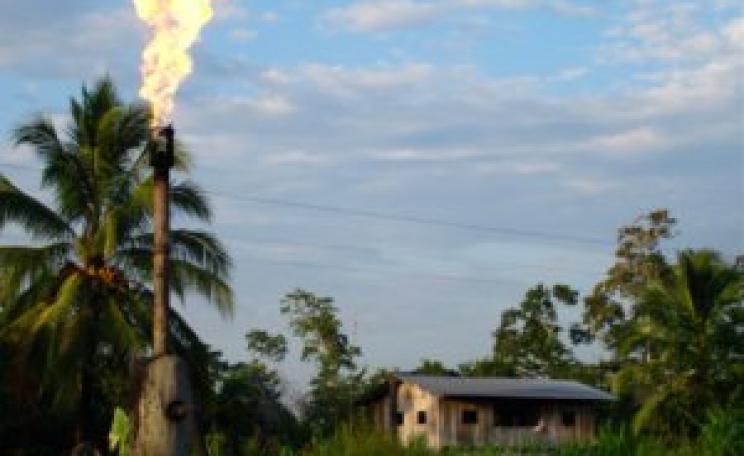Two months ago it emerged that a US company had inadvertently sent vials of a 1957 pandemic flu strain to laboratories around the world. The accident is only the latest outrage committed by the billion-dollar cash cow that is the US federal biological weapons programme. As you might recall, the Bush administration started its 'bio-defence' spending spree following the September 2001 deadly anthrax attacks in the US, and one of its first projects was to genetically engineer a super-resistant, even more deadly version of the anthrax virus.
Our leaders are nuts. Unfortunately, Project Jefferson, to give the anthrax programme its offi cial name, is not an isolated experiment. A US Army scientist in Maryland is currently trying to bring back elements of the 1918 Spanish flu, a virus that killed 40 million people. Meanwhile, a virologist in the Missouri city St Louis has been working on a more lethal form of mousepox (related to smallpox) - just to try stopping
the virus once it's been created. Furthermore, a lack of controls and runaway spending in the US bio-warfare programme are exacerbated by the Bush administration's bellicose disrespectn for the internationally recognised Biological Weapons Convention.
In other words, reduced pressure on weapons labs to issue declarations and allow inspections means less accountability and more opportunities for secrecy and abuse. Put bluntly, the increasing number of recent bio-weapons blunders in the US should come as no surprise. In February 2003, for example, the University of California at Davis (UCD) took 10 days to inform nearby communities that a rhesus monkey had escaped from its primatebreeding facility. Coincidentally, UCD was at the same time vying for government funds to set up its own 'hot zone' biodefence lab, which would be able to use primates for biological weapons testing. If the escaped monkey had been infected with ebola, or some other virus, it's unclear when or even whether the public would have been informed.
At roughly the same time that the monkey ditched UCD, the Pentagon unearthed more than 2,000 tons of hazardous biological waste in Maryland, much of it undocumented leftovers from an abandoned germ warfare programme. Nearby, meanwhile, the FBI was draining a pond for clues into the 2001 anthrax attacks. None of this inspires much trust in the transparency of US biological weapons programmes. And matters only appear to be getting worse.
In 2004, a whopping $6billion went up for grabs for federal bio-defence programmes, and laboratories across the country went ballistic trying to get their hands on some of that cash. And as fast as the money started appearing, so too did the cases of fraud and abuse. In June 2004, for example, the US Army was caught shirking inspections at a major bio-defence lab under its domain. The scandal went back to 1999, when the army had commissioned a biological and chemical weapons lab at the US Department of Energy's Oak Ridge National Laboratory in Tennessee. Oversight regulations obligated the army to inspect the lab each year thereafter, and the federal agency the Centers for Disease Control and Prevention (CDC) was supposed to have inspected the lab on a regular basis too.
Everything seemed to be running smoothly. In December 2003, the committee in charge of safety at Oak Ridge announced that it was 'comfortable [about] the review and inspections... conducted by the CDC and the army'.
However, there was just one, ever so small, problem. In 2004, the US Department of Energy's inspector general discovered that the army actually hadn't inspected the Oak Ridge bio-defence lab for the previous three years, and that the CDC hadn't been there for four years. Also in 2004, a military bio-defence contractor called Southern Research landed itself in hot water by accidentally sending live anthrax all the way across the US from Frederick in the eastern state of Maryland to Oakland Children's Hospital and Research Center in California. To make matters worse, it turns out that Southern Research's lab didn't even maintain the institutional biosafety committee required by federal research rules.
What do you imagine its punishment was? The Bush administration gave the company the task of safeguarding a new $30m biological weapons facility being built near Chicago. And In September 2004, three lab workers at Boston University Medical Center were accidentally exposed to the potentially lethal bio-warfare agent tularemia. The lab, however, didn't report the tularemia infections until two months later - conveniently after it had won a contract to build a new $178m biodefence laboratory.
Concerns about lack of transparency and monetary waste aside, the Bush administration's bio-weapons programme raises obvious ethical questions. Why should the US create newer, even deadlier, viruses? Who are these catastrophic weapons going to be tested on? What populations will they ultimately be used against?
These questions take on an even more urgent edge when you consider them in the context of the White House's military adventurism and the US media's poor reporting of its human consequences. For example, eyewitnesses to last year's attack on the Iraqi city of Falluja claimed that US forces used poisonous gases and bombs that exploded into fires that burned the skin despite water being thrown on the burns - a telltale sign of napalm or phosphorus bombs. In the UK Labour MP Alice Mahon demanded that Blair made 'an emergency statement to the Commons to explain why this [was] happening'. She said: 'It begs the question: "Did we know about this hideousweapon's use in
Iraq?"' No such question was asked in the US Congress. The US mainstream media didn't even cover the 'weird bomb' allegations.
But it doesn't take a genius to put two and two together: if American citizens allow their government to ignore international weapons-control conventions and then say nothing while fresh billions are invested in barbaric new weaponry, then they lose the right to act surprised when their military uses that weaponry on innocent civilians abroad.
Or even on Americans. You may be surprised to learn that in 2003 the Pentagon quietly admitted to having used biological and/or chemical agents on 5,842 US service members in secret tests conducted between 1962 and 1973. In operations called Project 112 and Project SHAD, the US Concerns about transparency and monetary waste aside, the Bush administration's bioweaponsprogramme raises obvious ethical problems. Why should the US create newer, even deadlier, viruses? Who are these catastrophic weapons going to be tested on? What populations will they ultimately be used against?
Defense Department tested its own weapons on service members aboard navy ships and in all sorts of other nasty ways - such as spraying a Hawaiian rainforest and parts of the Hawaiian island Oahu. All in all, tests were conducted in six states (Alaska, Florida, Georgia, Hawaii, Maryland and Utah), as well as in Canada and Britain. Many military personnel were not informed when the toxic agents were being tested on them. Only decades later, as crucial documents slowly become declassifi ed, have the veterans' health complaints been acknowledged.
You might think such barbarism could never happen again: too many legal protections for citizens are now in place. Think again.
There's a tricky clause in title 50, chapter 32, of the United States Code (the official publication that consolidates and codifies the general and permanent laws of America) which states that the US's defence secretary has the authority to conduct a chemical or biological agent test or experiment on humans in certain cases 'if informed consent has been obtained'.
So far so good. But check out section 1,515 of title 50, chapter 32. Entitled 'Suspension; Presidential Authorization', section 1,515 says: 'After 19 November 1969, the operation of this chapter, or any portion thereof, may be suspended by the president during the period of any war declared by Congress and during the period of any national emergency declared by Congress or by the president.'
You got it. If the president or Congress decides the country's at war then America's secretary of defence doesn't need anybody's consent to test chemical or biological agents on human beings. Sure gives you pause for thought during these days of perpetual 'war on terror'. In January 2005, US Senate majority leader Bill Frist called for a new Manhattan Project (referring to the WWII-era nuclear weapons bonanza) for biological weapons.
Frist told an audience at the World Economic Forum that 'the greatest existential threat we have in the world today is biological', before going on to predict a bio-warfare attack 'at some time in the next 10 years'. How ironic that while Frist cited the 2001 US anthrax attacks as proof that more biological weapons research was necessary, he failed to mention that those incidents involved anthrax produced right in the good 'ole USA - or that the primary suspect in the attacks was a US Army scientist. Frist also didn't clarify exactly how developing even more biological warfare agents would make the world safer.
The original Manhattan Project ultimately led to US forces dropping atom bombs on Hiroshima and Nagasaki, with the resulting slaughter of hundreds of thousands of people. It's terrifying to consider the potential repercussions of the Bush administration's coveted new biological-weapons Manhattan Project.
Heather Wokusch is a freelance writer who can be contacted via her website.
This article was adapted from her forthcoming book The Progressives' Primer: 100 easy ways to make a difference now
This article first appeared in the Ecologist June 2005.



